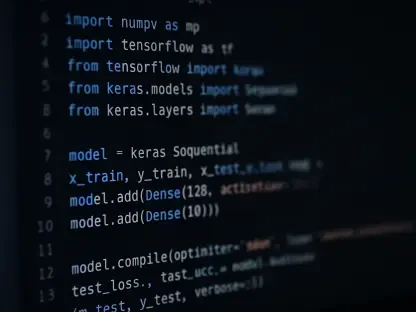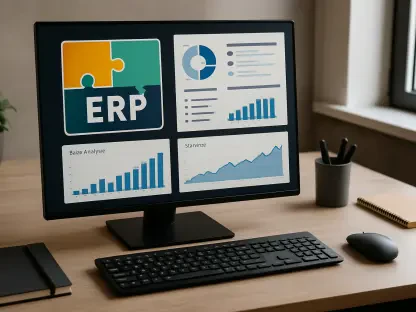Laying the Foundation for Secure AI Interactions
In an era where AI systems increasingly interact with external tools, databases, and APIs, securing remote Model Context Protocol (MCP) servers has become a paramount concern for organizations. Imagine a scenario where an AI-driven platform, crucial to a company’s customer service operations, suffers a breach due to an exposed MCP server, resulting in unauthorized access to sensitive tools. Such incidents underscore the critical need for robust security measures tailored to MCP environments, which enable complex interactions but also introduce unique vulnerabilities. The risks of tool poisoning, prompt injection, and session hijacking loom large, threatening data integrity and operational stability.
This guide delves into Google Cloud’s best practices for safeguarding remote MCP servers, offering a structured approach to mitigate these specific threats. By exploring actionable strategies and real-world applications, it aims to equip businesses with the knowledge to protect their AI ecosystems effectively. The focus extends beyond basic security to address the nuances of MCP deployments, ensuring scalability and governance in dynamic cloud environments.
Why MCP Server Security Matters in AI-Driven Systems
Securing remote MCP servers is not merely a technical requirement but a cornerstone of maintaining trust in AI-driven operations. These servers act as gateways for AI agents to interact with external resources, making them prime targets for cyberattacks that could compromise entire systems. Without stringent security, organizations risk data breaches, unauthorized tool access, and reputational damage, especially in industries handling sensitive information.
Google Cloud’s guidance provides a framework that enhances protection by addressing MCP-specific vulnerabilities while aligning with broader cloud security principles. This approach ensures that businesses can scale their operations confidently, knowing that security measures adapt to multiple server instances. Implementing these practices also fosters compliance with regulatory standards, an essential factor for organizations operating in regulated sectors.
The consequences of neglecting MCP security are severe, ranging from data exposure to operational disruptions. A single misconfigured server could serve as an entry point for attackers to manipulate AI interactions or steal critical information. Thus, prioritizing robust security protocols becomes a proactive step toward safeguarding innovation and maintaining a competitive advantage in a rapidly evolving digital landscape.
Core Best Practices for Securing MCP Servers on Google Cloud
Google Cloud advocates a multi-layered strategy to secure remote MCP servers, focusing on identity verification, secure transport, and architectural design as foundational pillars. These practices are crafted to counter specific threats like prompt injection and unauthorized access, ensuring that AI systems operate within a protected environment. By embedding security into every aspect of MCP deployment, organizations can mitigate risks effectively.
A key emphasis lies in integrating these measures with industry trends, such as zero-trust architectures and continuous monitoring. This alignment not only addresses immediate vulnerabilities but also prepares systems for emerging threats in the cloud security landscape. The following sections break down critical practices, providing actionable insights for implementation and demonstrating their impact through practical examples.
Establishing a Centralized MCP Proxy for Enhanced Protection
One of Google Cloud’s cornerstone recommendations is deploying a centralized MCP proxy to act as a security intermediary between clients and remote servers. This proxy serves as a single point of control, enforcing access policies, managing secrets, and enabling real-time threat detection. Platforms like Cloud Run, Apigee, or Google Kubernetes Engine (GKE) offer robust environments for hosting such proxies, ensuring seamless integration with existing infrastructure.
The proxy’s role extends to comprehensive logging and monitoring, which are vital for identifying and responding to suspicious activities promptly. By centralizing security enforcement, it reduces the complexity of managing multiple server instances, allowing consistent protection without necessitating changes to individual MCP configurations. This approach significantly minimizes the attack surface, a critical factor in preventing breaches.
Case Study: Thwarting Tool Poisoning with Proxy Enforcement
Consider a hypothetical scenario where an AI system, reliant on external tools, faces a tool poisoning attempt through a misconfigured manifest exposing unauthorized endpoints. A centralized MCP proxy, deployed on GKE, intercepts all interactions, applying strict access controls and flagging anomalous behavior through real-time monitoring. This intervention prevents the malicious tool from integrating with the system, safeguarding the AI’s integrity and demonstrating the proxy’s effectiveness in neutralizing specific threats.
Strengthening Identity and Access Management for MCP Interactions
Identity and Access Management (IAM) forms another critical component of Google Cloud’s security framework for MCP servers. Emphasizing the principle of least privilege, IAM ensures that only verified entities gain access to specific tools or resources, reducing the risk of unauthorized interactions. Strong authentication mechanisms further bolster this defense, creating a robust barrier against potential intruders.
Implementing IAM involves configuring granular policies that restrict access based on roles and responsibilities within the organization. Steps include defining access scopes for AI agents, integrating secure authentication protocols, and regularly auditing permissions to eliminate unnecessary privileges. Such measures ensure that MCP server interactions remain secure, even in distributed or remote setups.
Real-World Example: Blocking Session Hijacking through IAM
In a sample deployment, a potential session hijacking attempt targeted an MCP server facilitating AI-driven analytics. Robust IAM configurations, restricting access to verified identities and enforcing multi-factor authentication, thwarted the attack by denying entry to unauthorized users. This example underscores how tailored IAM policies can prevent breaches, reinforcing the importance of identity-focused security in MCP environments.
Benchmarking Google Cloud Against AWS and Azure
Google Cloud’s approach to securing MCP servers shares common ground with AWS and Azure, particularly in emphasizing centralized control, strong identity management, and detailed auditing. All three providers advocate minimizing direct internet exposure of servers and enforcing the principle of least privilege to limit access. These shared tenets reflect a broader industry consensus on protecting remote and agent-based systems in cloud environments.
However, Google Cloud distinguishes itself by explicitly addressing MCP-specific threats, such as prompt injection and tool poisoning, which receive less targeted focus in AWS’s Session Manager or Azure’s Arc frameworks. AWS prioritizes general remote access security through IAM-driven controls and CloudTrail logging, while Azure leverages Role-Based Access Control and Entra ID for identity management. Google Cloud’s tailored narrative offers deeper insights into AI-driven interaction risks, providing a nuanced perspective.
This comparison reveals that while each provider employs distinct tools, the overarching goal of layered security remains consistent. Google Cloud’s MCP-focused guidance complements the broader frameworks of AWS and Azure, offering organizations a specialized lens to address unique challenges. Understanding these differences enables businesses to select or combine strategies that best align with their operational needs.
Reflecting on Proven Strategies and Next Steps
Looking back, Google Cloud’s framework for securing remote MCP servers proved to be a comprehensive solution that tackled the unique challenges of AI-driven systems head-on. The centralized proxy model, coupled with robust IAM practices, established a strong defense against threats like session hijacking and data leaks. This approach not only addressed immediate vulnerabilities but also set a benchmark for scalability and governance in complex cloud environments.
As a forward-looking step, organizations should consider adopting a phased implementation of these best practices, starting with proxy deployment and IAM configuration. Leveraging Google Cloud’s monitoring tools to maintain visibility into MCP interactions can further enhance security posture. Additionally, exploring hybrid strategies that incorporate elements from AWS and Azure could provide a more resilient framework, tailored to specific use cases.
Beyond immediate actions, staying abreast of evolving threats in AI and cloud security remains crucial. Engaging with industry updates and refining security policies over time will ensure sustained protection. For businesses with extensive remote server interactions, integrating these measures offers a pathway to safeguard innovation while navigating the complexities of modern digital landscapes.









